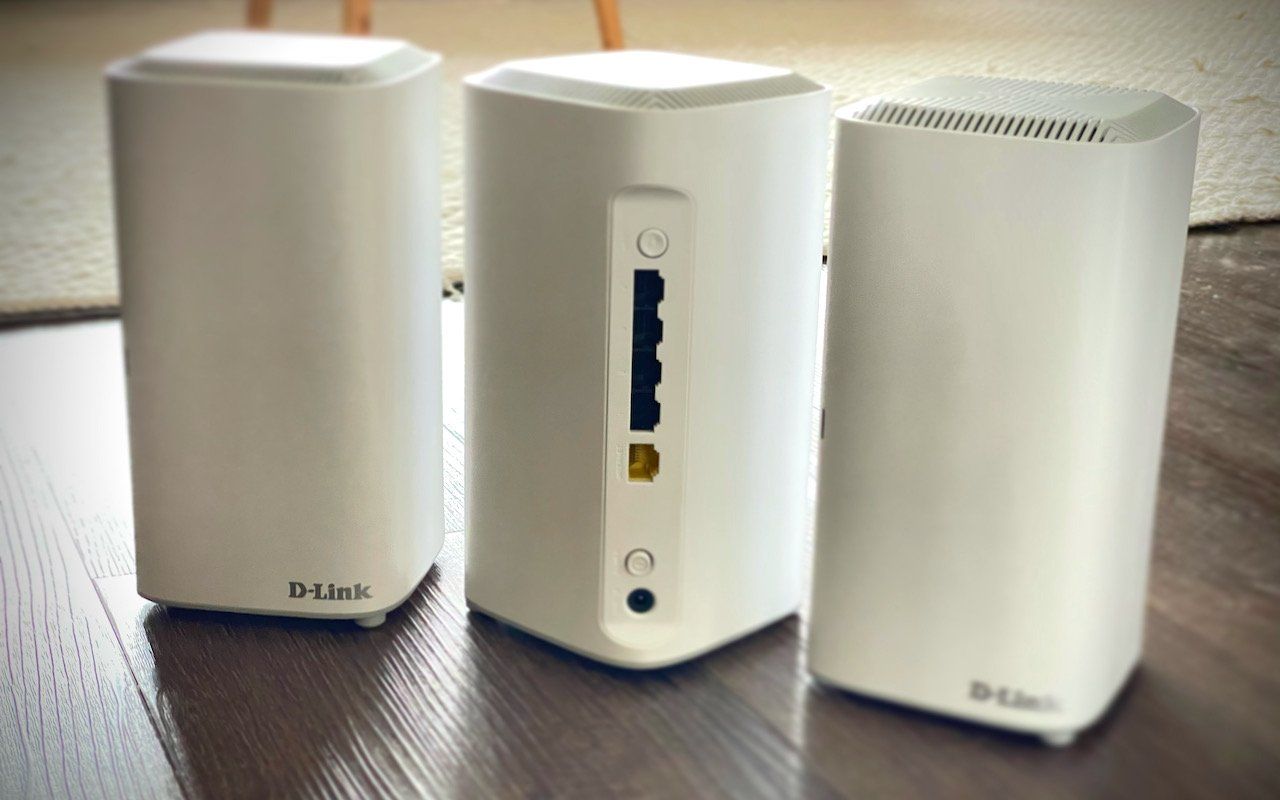D-Link COVR AX1800 review: Wi-Fi 6 mesh networking is easy now
Wi-Fi 6 mesh networking is now easy to get working nicely, and the COVR's extra Ethernet ports on every unit are a boost over competitors.

Mesh networking is the saviour of easy household internet reaching every corner of the home. Wi-Fi 6 is the saviour of houses with 20+ devices all wanting as much wireless internet as they can handle at every moment of the day. Put them together and you're into a solid new era for home broadband.
So here we have the latest from D-Link, the COVR AX1800, which is sold in a nice 3-pack to blanket your home in Wi-Fi 6 for fun and profit at a cost of $549 (or $399 for a 2-pack, or $249 to fly solo). And, quite simply, it does a fine job at the task.
The 'AX' in the name is from the technical name for Wi-Fi 6, 802.11ax. Wi-Fi standards have kindly dumped the b, g, ac, and so on letters that mean nothing to normal folk and has moved to a far easier numbering system. You'll know when Wi-Fi 6 has been surpassed when a Wi-Fi 7 comes along. No hunting for a translation on some weird new letter.
Of course, most folks have just left their existing Wi-Fi sent to them by their broadband provider just sitting there chugging along for most of the past decade. If that's you, an upgrade like this will feel heavenly. Wi-Fi 6 is designed not just to be faster but also smarter about how it sends data around the local network. It's designed to handle the modern world where everything needs a little, or a lot, of data to work smoothly.
So how does the D-Link COVR AX1800 in particular stand up to the task?
Let's get this out of the way first. Last year I got very annoyed at D-Link COVR-2202 hardware for having extremely short power cables. Has that changed? Nope. Not at all. These cables measure 112cm from where it connects to the power plug and into the back of the device. That's more than 30cm shorter than other hardware I have here to test at the same time. And the difference really does mean one of those cables reaches from where my powerboard always sits to the shelf I want the unit to sit on with one brand to not being able to do it without an extension on the D-Link.
That really shouldn't be a thing. So D-Link, shame on you yet again for skimping on the most basic ingredient – the power cable length. Extensions are cheap enough, so I'm not going to go off again (apart from the above), but with the concept of a Mesh network being about positioning hardware just where you want it, this hardware cannot do the trick out of the box on its own.
In better news, D-Link has put a few extra cents saved on copper cable into adding extra Ethernet ports on every mesh unit. You get four Gigabit Ethernet ports on each, which makes this a really great bridging setup if you have your main router in the office or living room and you want to attach consoles and a TV in the games room. Putting hardware that can plug in onto a port just helps stabilise that individual connection and let the COVR unit do the heavy lifting. It's a good choice where you can do it, and the COVR AX1800 makes it easy to fit in a few key units in each room.
The COVR software works nicely for setup and performance management, and you can select devices to have priority over others through the app to ensure the most important gear in your house gets to suck down the data before anything else.
An important added note here is that D-Link hardware supports the Wi-Fi Certified EasyMesh standard, which aims to ensure that you're buying gear that can not only do all the smart mesh back and forth to make coverage seamless around the home, but to also open the door to mixing and matching brand hardware depending on your needs. It helps feel confident that over the long run these units will still be useful even if you want to change your main Wi-Fi router to another EasyMesh compatible unit and keep these as your distributed access points.
Overall, D-Link's COVR AX1800 system is one of a few great options out there now that make it easy to upgrade your whole of home wireless broadband to a platform that resets your experience for the decade ahead. Those extra Ethernet ports are a great feature here over the competition – just make sure and buy a couple of short extension cables to position these in the 'just right' location in your home.
Byteside Newsletter
Join the newsletter to receive the latest updates in your inbox.



